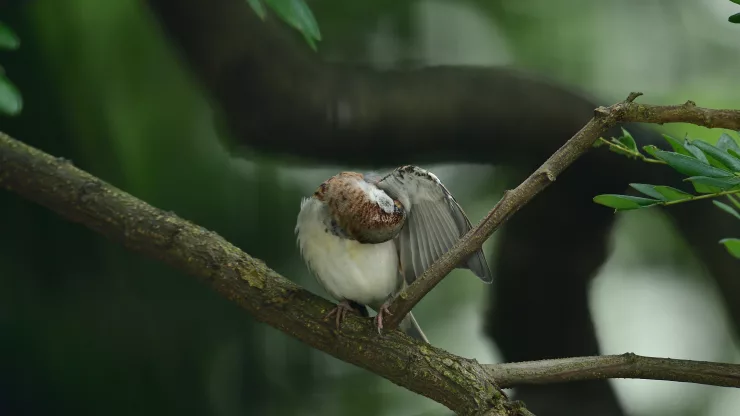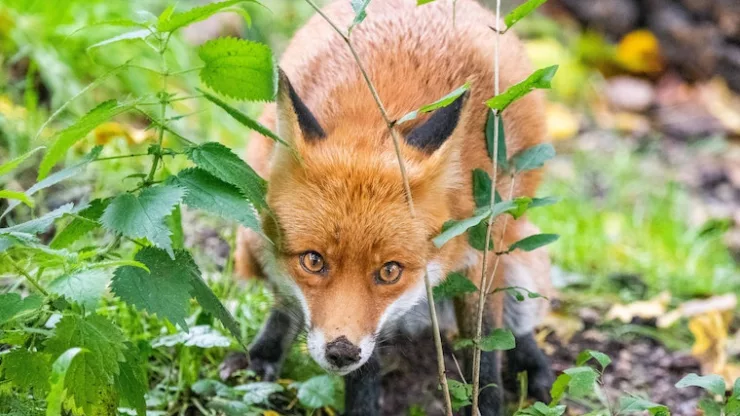Urban Wildlife and Urban Agriculture: Finding Balance
Urbanization is changing the face of our planet, and one of the biggest challenges we face is finding a balance between urban wildlife and agriculture.
As cities grow, wildlife populations are often forced to adapt to new environments, leading to a host of challenges for both humans and animals.
However, with careful planning and management, it is possible to create sustainable urban environments that support both wildlife and agriculture.
Jump to Section
Introduction
As the world’s population continues to grow, more and more people are moving to cities.
In 2018, 55% of the world’s population lived in urban areas, and it is expected that by 2050, this number will rise to 68%. This rapid urbanization has a significant impact on wildlife and biodiversity, as natural habitats are destroyed or fragmented to make way for new development.
However, urban areas also offer opportunities for sustainable agriculture, which can help to support local communities and reduce our impact on the environment.
The Importance of Finding Balance between Urban Wildlife and Agriculture
Understanding the Need for Urban Agriculture in a World of Rapid Urbanization
Urban agriculture is becoming increasingly important as we seek to feed a growing population while also reducing our impact on the environment.
By growing food in urban areas, we can reduce the distance that food needs to travel, which can help to reduce greenhouse gas emissions and other environmental impacts.
Urban agriculture also offers opportunities for social and economic development, as well as community building and education.
The Benefits of Urban Agriculture for People and the Environment
There are many benefits to urban agriculture, including:
- Providing fresh, healthy food for local communities
- Reducing the carbon footprint of food production and transportation
- Creating green spaces that can help to mitigate the urban heat island effect
- Promoting biodiversity and supporting pollinators
- Creating opportunities for education and community building
The Impact of Urbanization on Wildlife and Biodiversity
Urbanization can have a significant impact on wildlife and biodiversity, as natural habitats are destroyed or fragmented to make way for new development.
This can lead to a range of challenges for both humans and animals.
The Challenges of Coexisting with Urban Wildlife
As cities grow, wildlife populations are often forced to adapt to new environments, which can lead to conflicts with humans.
Some of the challenges associated with coexisting with urban wildlife include:
The Effects of Urbanization on Wildlife Habitats
As natural habitats are destroyed or fragmented, wildlife populations are forced to adapt to new environments. This can lead to a range of challenges, including:
- Loss of habitat and biodiversity
- Fragmentation of habitat, which can make it difficult for animals to find food, mates, and shelter
- Increased competition for resources, which can lead to conflicts between different species
The Consequences of Wildlife Encounters in Urban Areas
As wildlife populations adapt to urban environments, they may come into contact with humans more frequently. This can lead to a range of challenges, including:
- Property damage caused by wildlife
- Public safety concerns, particularly in areas where large predators are present
- The spread of disease
Strategies for Achieving Harmony between Urban Wildlife and Agriculture
Despite the challenges associated with coexisting with urban wildlife, it is possible to create sustainable urban environments that support both wildlife and agriculture.
Some strategies for achieving harmony between urban wildlife and agriculture include:
Best Practices for Urban Agriculture that Consider Wildlife Needs
By taking into account the needs of wildlife, it is possible to create urban agriculture spaces that support both people and the environment.
Some best practices for urban agriculture that consider wildlife needs include:
Creating Wildlife-Friendly Urban Agriculture Spaces
By creating wildlife-friendly urban agriculture spaces, it is possible to support biodiversity and promote environmental sustainability.
Some ways to create wildlife-friendly urban agriculture spaces include:
- Planting native species that support pollinators and other wildlife
- Incorporating features like birdhouses and bat boxes to provide habitat for wildlife
- Reducing the use of pesticides and other chemicals that can harm wildlife
Incorporating Sustainable Practices to Benefit Both Wildlife and Agriculture
By incorporating sustainable practices into urban agriculture, it is possible to reduce our impact on the environment while also supporting local communities.
Some ways to incorporate sustainable practices into urban agriculture include:
- Using compost and other organic materials to improve soil health
- Collecting and reusing rainwater to reduce water consumption
- Using renewable energy sources like solar power to reduce greenhouse gas emissions
Mitigating Wildlife Conflicts in Urban Areas
While it is not always possible to avoid wildlife encounters in urban areas, there are strategies that can be used to mitigate conflicts and promote coexistence.
Some strategies for mitigating wildlife conflicts in urban areas include:
Developing Effective Wildlife Management Plans
By developing effective wildlife management plans, it is possible to reduce the risk of conflicts between humans and wildlife. Some elements of effective wildlife management plans include:
- Identifying areas where wildlife encounters are likely to occur
- Educating the public on how to coexist with wildlife
- Developing strategies for managing conflicts when they do occur
Educating the Public on Coexisting with Urban Wildlife
By educating the public on how to coexist with urban wildlife, it is possible to reduce the risk of conflicts and promote harmony between humans and animals.
Some ways to educate the public on coexisting with urban wildlife include:
- Providing information on wildlife behavior and habitat needs
- Encouraging people to report wildlife sightings and interactions
- Offering resources and support for managing wildlife conflicts
Conclusion: Creating Sustainable Urban Environments that Support Both Wildlife and Agriculture
As the world’s population continues to grow and urbanization accelerates, it is more important than ever to find ways to support both wildlife and agriculture in urban areas.
By taking into account the needs of wildlife and incorporating sustainable practices into urban agriculture, it is possible to create sustainable urban environments that support local communities and promote environmental sustainability.
FAQ
How can urban agriculture benefit local communities?
Urban agriculture can benefit local communities by providing fresh, healthy food, promoting social and economic development, and creating opportunities for education and community building.
What are some of the challenges associated with coexisting with urban wildlife?
Some of the challenges associated with coexisting with urban wildlife include property damage, public safety concerns, and the spread of disease.
How can we mitigate conflicts between humans and wildlife in urban areas?
We can mitigate conflicts between humans and wildlife in urban areas by developing effective wildlife management plans, educating the public on coexisting with urban wildlife, and creating wildlife-friendly urban agriculture spaces.
I’m a nature enthusiast and creator of Metro Wilds and have spent years exploring the great outdoors.
With a passion for environmental conservation and sustainability, I have dedicated my career to writing about the beauty and wonders of nature, as well as the threats facing our planet.
Contact me at [email protected] for assistance.





